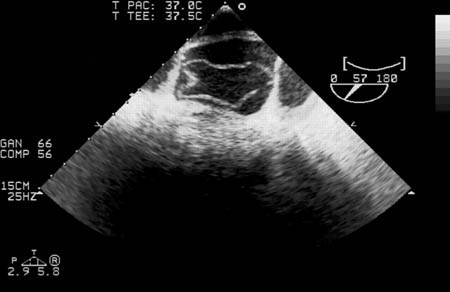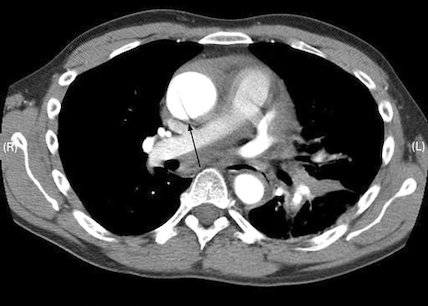Epidemiology
Globally, reported incidences of aortic dissection range from 3 to 10 cases per 100,000 patients in the United States to 16 cases per 100,000 patients in Sweden.[8] One prospective UK-based population study derived an incidence of 6 cases per 100,000 when out-of-hospital deaths were included.[9] Men are predominantly affected, typically between the ages of 50 and 70 years; patients with Marfan syndrome, bicuspid aortic valve, Loeys-Dietz syndrome, and vascular Ehlers-Danlos syndrome present at younger ages.[6] The true incidence of acute aortic dissection may be underrepresented by these population reports, given that many patients die before reaching a hospital, with the cause of death never proven.[8]
Risk factors
This is the most important predisposing factor for aortic dissection.[13] Most patients have prior hypertension, often poorly controlled.[14][15] The International Registry of Acute Aortic Dissection found that 77% of patients with aortic dissection had a history of hypertension and 27% had a history of atherosclerosis.[16]
Approximately 1% of sudden deaths are attributable to aortic rupture. Of these, two-thirds are due to dissection and one third to degenerative aneurysms.[17]
Predisposes to both aneurysms and/or dissections, presumably related to weakness of the aortic wall.[6][18][Figure caption and citation for the preceding image starts]: Trans-oesophageal echocardiography (transverse aortic section) showing a circumferential dissection of the ascending aorta in a 30-year-old patient with features of Marfan's syndromeBouzas-Mosquera A, Solla-Buceta M, Fojón-Polanco S. Circumferential aortic dissection. BMJ Case Reports 2009; doi:10.1136/bcr.2007.049908 [Citation ends]. [Figure caption and citation for the preceding image starts]: CT scan showing dissecting aneurysm in a 45-year-old patient with Marfan syndrome experiencing chest pain [Citation ends].
[Figure caption and citation for the preceding image starts]: CT scan showing dissecting aneurysm in a 45-year-old patient with Marfan syndrome experiencing chest pain [Citation ends].
Predisposes to both aneurysms and/or dissections, presumably related to weakness of the aortic wall.[6]
Predisposes to both aneurysms and/or dissections, presumably related to weakness of the aortic wall.
Untreated coarctation in adults is associated with dissection and is probably related to longstanding hypertension.
Tobacco use is closely associated with atherosclerotic and vascular disease and therefore dissections.
Family history confers increased risk.[15]
The usual presentation is a man in his 50s. However, aortic dissection can occur in younger patients, even in the absence of connective-tissue disorders, and this group should not be overlooked.[6]
Can weaken the media of the aorta and lead to expansion or dissection.
Clinical or laboratory features of several connective tissue diseases such as rheumatoid arthritis, systemic lupus erythematosus, systemic sclerosis, polymyositis, dermatomyositis, and Sjogren syndrome, without meeting the criteria for a specific diagnosis.
Acute hypertension, vasoconstriction, increased stroke volume, and vasospasm as a result of the misuse of these agents may lead to aortic dissection. Younger age at presentation is typical.[20] See Cocaine use disorder and Amfetamine and methamphetamine use disorder.
Typically confined to young patients and theoretically attributed to the elevated aortic pressure during straining.
One systematic review and meta-analysis found that diabetes is associated with a lower prevalence of aortic dissection and abdominal aortic aneurysm.[24] Data from one observational Swedish study showed that type 2 diabetes reduces the relative risk of aortic dissection by 47% over 7 years.[25] There are some data suggesting that metformin therapy may be responsible for the lower abdominal aortic aneurysm rates seen in adults with diabetes, but the potential mechanism is yet to be determined.[26][27]
Use of this content is subject to our disclaimer